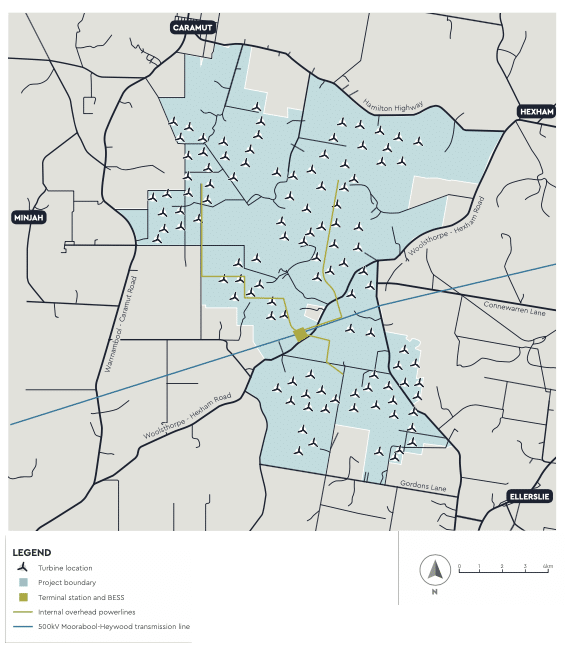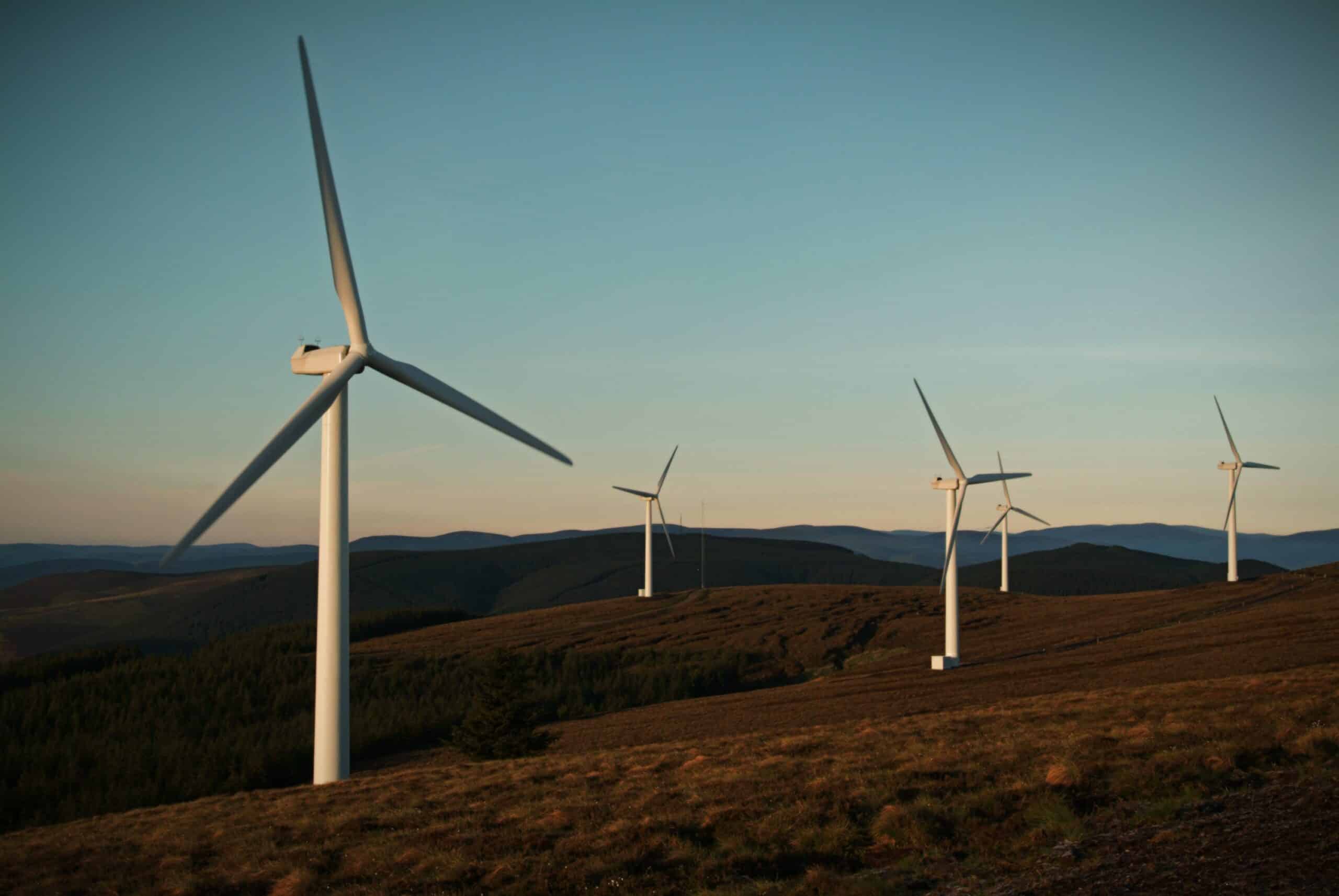Wind Prospect is in the environmental and planning approvals phase for the development of the Hexham Wind Farm, a renewable energy project located between Hexham, Caramut and Ellerslie in south-west Victoria, approximately 15 kilometres west of Mortlake.
The Hexham Wind Farm is in the environmental and planning approvals phase with preparation of the Environment Effects Statement (EES) currently underway. The proposed Project is expected to include up to 106 wind turbines and a Battery Energy Storage System (BESS).
The Project would be co-located on agricultural land primarily used for sheep and cattle grazing, with some cropping. The Project site was selected due to its reliable wind resource, relatively low population density and proximity to existing transmission infrastructure. A terminal station would be built within the Project site next to the existing 500 kV transmission line, meaning the construction of new transmission lines is not required. This approach helps to minimise environmental impacts while allowing agricultural activities to continue alongside the Project.
Location
The map below shows the current indicative layout of wind turbines for the proposed Project. Turbine locations will be finalised through detailed environmental, cultural heritage, technical and community assessments as part of the Environment Effects Statement (EES).

If approved, the Hexham Wind Farm would support Victoria’s clean energy future by supplying renewable electricity to the grid. The Project would produce an estimated 2,559 gigawatt hours (GWh) of electricity annually. That would be enough to power up to 515,000 households and abate approximately 1.88 million tonnes of carbon dioxide each year.
In addition to its energy contribution, the proposed Hexham Wind Farm would deliver economic benefits for the region. It would create local employment opportunities during the construction phase and provide ongoing jobs once operational. The Project would generate opportunities for local suppliers, businesses, trades and service providers. Wind Prospect is committed to using local or regional labour and services where the required skills and expertise are available.
The Project would provide dedicated support for the local community. Hexham Wind Farm currently operates a Community Sponsorship Fund of $20,000 annually. Once operational, this would transition into the Community Benefit Fund, providing on-going annual contributions of up to $106,000 per year, or up to $1,000 per turbine, for local initiatives over the life of the Project.
We love supporting local community projects, programs and initiatives. Visit the Community page to see what we’ve sponsored and find out how you can apply for funding through our sponsorship fund.
Timeline
Project Approvals and Timeline
As part of the Victorian Government’s planning and approvals process for major projects, Wind Prospect is preparing an Environment Effects Statement (EES) for the proposed Hexham Wind Farm. An EES is a requirement under the Environment Effects Act 1978 and is overseen by the Department of Transport and Planning (DTP) on behalf of the Victorian Government Minister for Planning.
The purpose of the EES is to carefully assess the potential environmental, social and economic impacts during the construction, operation and decommissioning of the Project. It is a rigorous process that requires considerable research and consultation to ensure that any potential impacts on the local community and environment are understood and mitigated where possible.
In September 2024, the DTP released the final scoping requirements for the Hexham Wind Farm EES. As part of this, a range of detailed studies are being carried out to assess the potential impacts of the Project. These include but are not limited to:
- Biodiversity and ecology: Assessing the impact on local wildlife, including any risks to protected species and habitat.
- Water resources: Evaluating potential effects on local water systems, such as wetlands, streams and groundwater.
- Cultural heritage: Investigating the potential impact on both Aboriginal and European cultural heritage sites.
- Noise, dust and traffic: Analysing how construction and operational activities might affect local amenity, including noise levels, dust and traffic.
- Visual amenity: Examining how the wind turbines could alter the landscape and considering measures to reduce visual impacts.
- Socioeconomic effects: Assessing how the Project could impact local agriculture, the regional economy and infrastructure.
- Fire risk: Assessing fire risk associated with bushfire and a fire starting within the proposed infrastructure.
The studies aim to identify potential issues and develop strategies to avoid, minimise or manage any adverse impacts on the environment and the social fabric of the community.
Community consultation
Community engagement is an essential part of the EES process and the development of the Project. Wind Prospect is committed to keeping local residents, landowners and other stakeholders informed and involved, and aims to continue to do this through:
- Consultation during preparation: Throughout the EES preparation phase, Wind Prospect is engaging with the community through information sessions, newsletters and one-on-one consultations. This provides opportunities for local stakeholders to raise concerns, ask questions and share their views.
- Community input on the EES: Once the EES is prepared, it will be made available to the public for review. This gives the community a chance to formally provide feedback on the findings to the Minister for Planning. Any issues raised during this formal consultation stage will be carefully considered, and adjustments to the Project will be made if necessary.
- Ongoing communications: Wind Prospect is committed to maintaining open lines of communication throughout the process to ensure the community remains informed and involved at all stages.
If you have any questions, please don’t hesitate to reach out to the Project team.
